Star Trek: Discovery’s season finale shot the crew into a space and time wholly unexplored by Star Trek, but that doesn’t mean there isn’t room for more nostalgic cameos. Far from it, in fact.
“Such Sweet Sorrow Part II” ended with Michael Burnham leading the U.S.S. Discovery into the 32nd century, nearly a thousand years into the future from where they started. It was a move designed to keep dangerous technology out of the clutches of Control, a malevolent A.I. bent on achieving sentience and the total annihilation of all organic life. From a narrative standpoint, it also freed up Discovery to actually discover new life and new civilizations – a Star Trek tradition that the first two seasons somewhat eschewed in favor of nostalgic deep dives into various people, cultures and conceits mostly mined from aspects of the Original Series. But while Discovery is now free of prequel detritus and able to chart its own story, it’s doubtful we’ll have seen the last of the show’s incorporations of previous Trek.
Even without the (heavy) use of time travel, there are plenty of species and characters from earlier Star Trek series that could potentially meet up with the Discovery. Beings with long lifespans, beings with eternal lifespans, beings who live outside linear time and space – Star Trek canon is full of them, and a handful of them would make for some very, very interesting encounters.
Temporal Agents
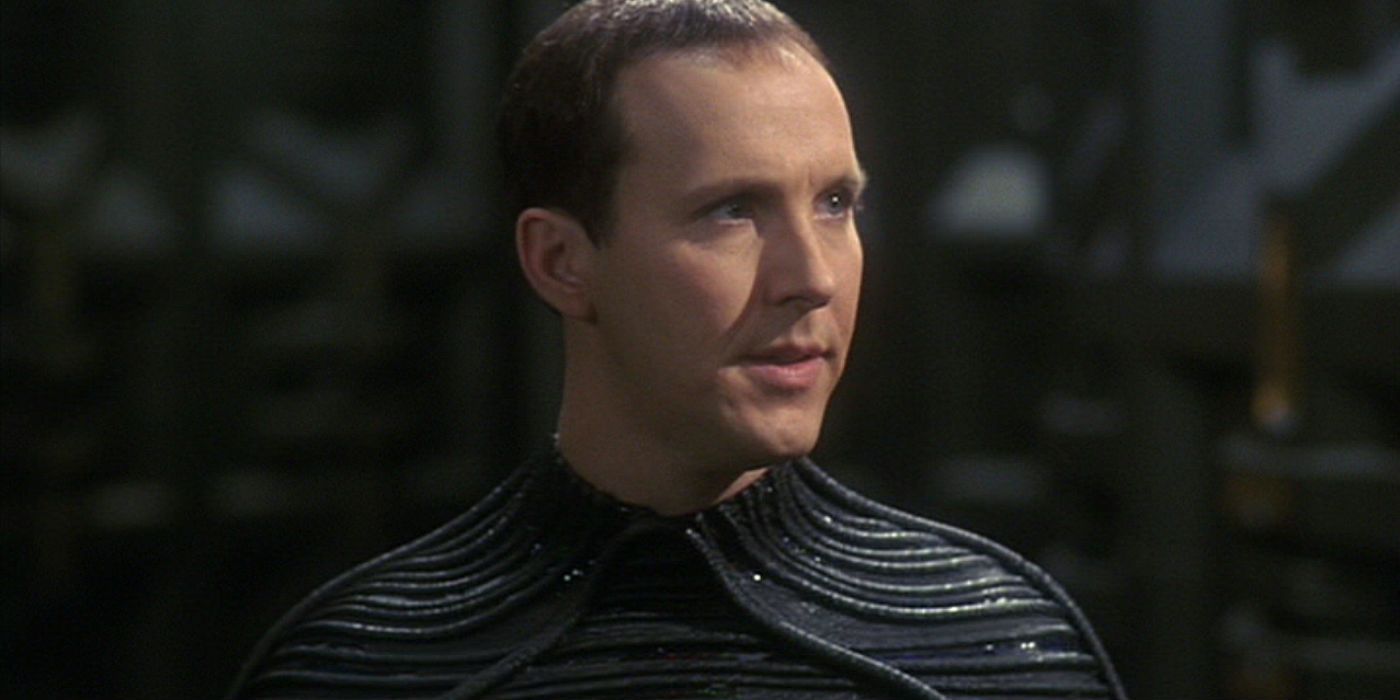
One of most memorable arcs of Star Trek: Enterprise was the Temporal Cold War, which saw differing factions warring through time with the NX-01 often caught in the middle. Managing the mess and acting as a liaison to Captain Archer was a temporal agent known only as Daniels. He helped the crew prevent temporal incursions caused by the Suliban Cabal and other factions, and was based in the 31st century. Considering the nature of Discovery’s journey (many temporal incursions followed by one big one), it would make more sense than not for a temporal agent, if not Daniels himself, to show up to greet them.
The Traveler/Wesley Crusher
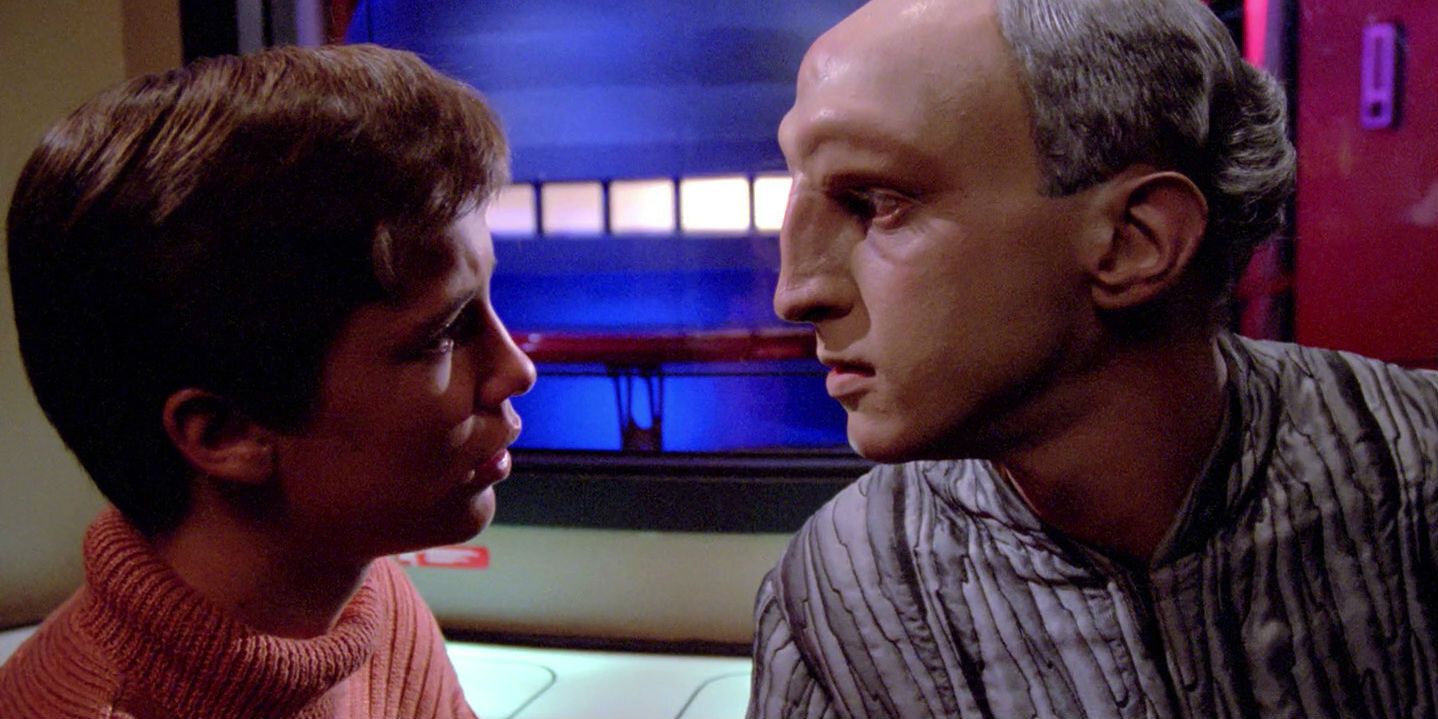
The background of the Traveler and his species is pretty vague, but he had the unique ability to phase in and out of time, space and dimensions by using his mind. His decidedly non-linear lifestyle makes his species a natural candidate to reappear on Discovery (considering the ship can kind of do the same thing with the spore drive), but the more interesting possibility is that they could encounter Wesley Crusher.
During TNG’s seventh season, Wesley Crusher’s final episode, “Journey’s End,” sees him dissatisfied with his potential future in Starfleet. Eventually, the Traveler appears to him and offers him the chance to explore the limits of reality and existence along with him. In Star Trek: Nemesis, Wesley’s returned to Starfleet and serving as a Lieutenant, but that doesn’t mean he couldn’t have rejoined the Traveler again or simply manifested similar abilities, which would absolutely have allowed him to cross paths with Discovery. And considering Wil Wheaton’s still quite active with his Star Trek legacy, it’s hard to imagine him saying no to the prospect.
Guinan
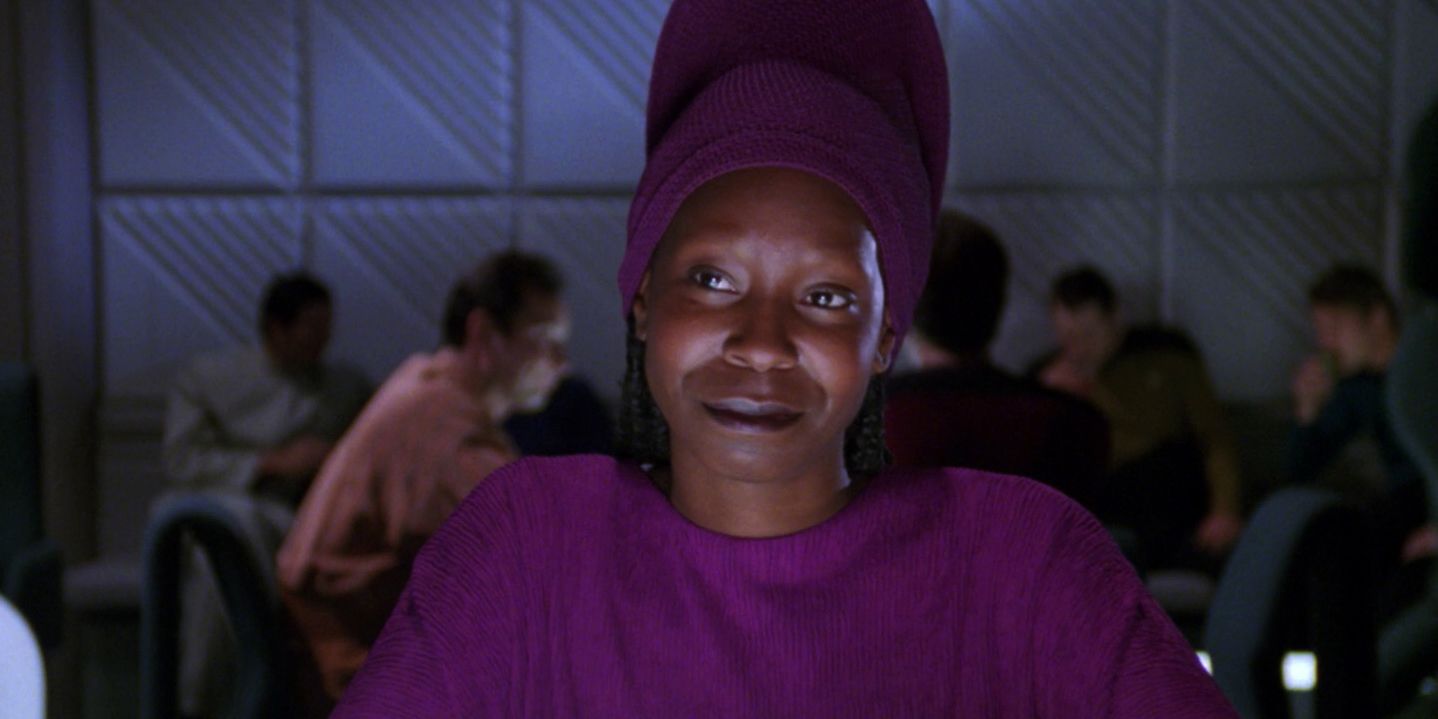
The Ten Forward barkeep and longtime confidante of Jean-Luc Picard was El-Aurian, a peaceful species that specialized in listening, for lack of a better word. Before the Borg decimated their population in 2265, El-Aurians traveled the universe, blending in with other races (in some cases) and learning their ways. The Next Generation made much of Guinan’s advanced age (not to mention her 23 marriages and many, many children), and while we never got an exact number, El-Aurians have definitely been known to live for at least 1000 years. Guinan was alive as early as the late 19th century as evidenced by her appearance in “Time’s Arrow,” and we don’t know how old she was then. But if she were very young in the 19th century and El-Aurians live longer than a millennia, it’s not outside the realm of possibility for the character to show up again. And if she is alive in the 32nd century, she might even be able to register Discovery’s arrival if time travel of that magnitude triggers her unique sensory perception.
Odo
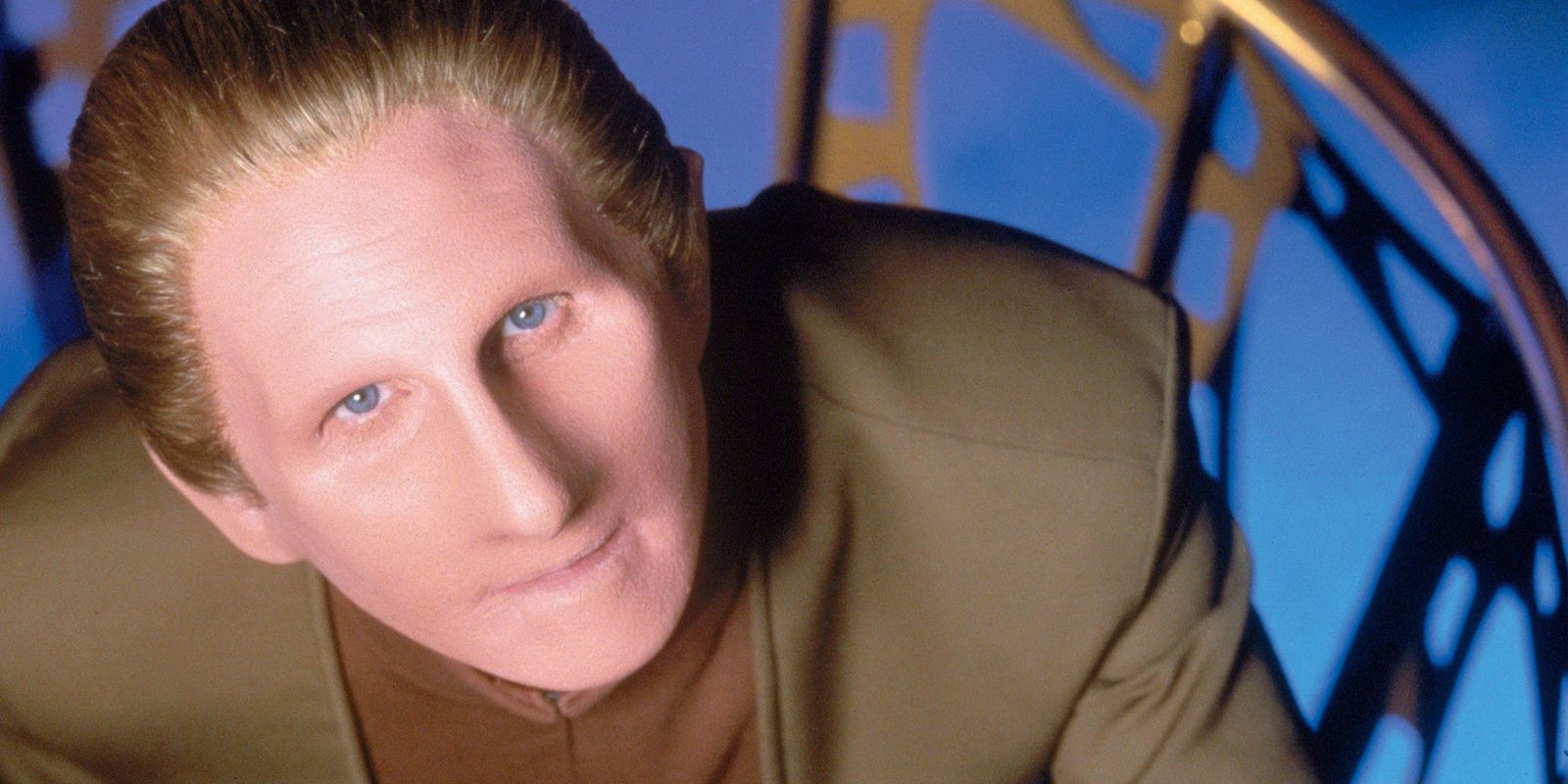
Odo (or simply the Founders themselves) is an extremely likely candidate to encounter the Discovery in the 32nd century. At no point during Deep Space Nine did the show establish a concrete lifespan when it came to Changelings, and considering they can do things like, say, survive in the vacuum of space, they’re definitely working with a pretty resistant cellular structure to say the least. And at one point the female Changeling refers to Odo as “timeless,” though it’s possible she was exaggerating as a reflection of her distaste for the comparatively weaker solids he chose to surround himself with. Plus, extra-long lifespans could have easily contributed to the godlike status they maintained to the many societies they conquered.
Ben Sisko
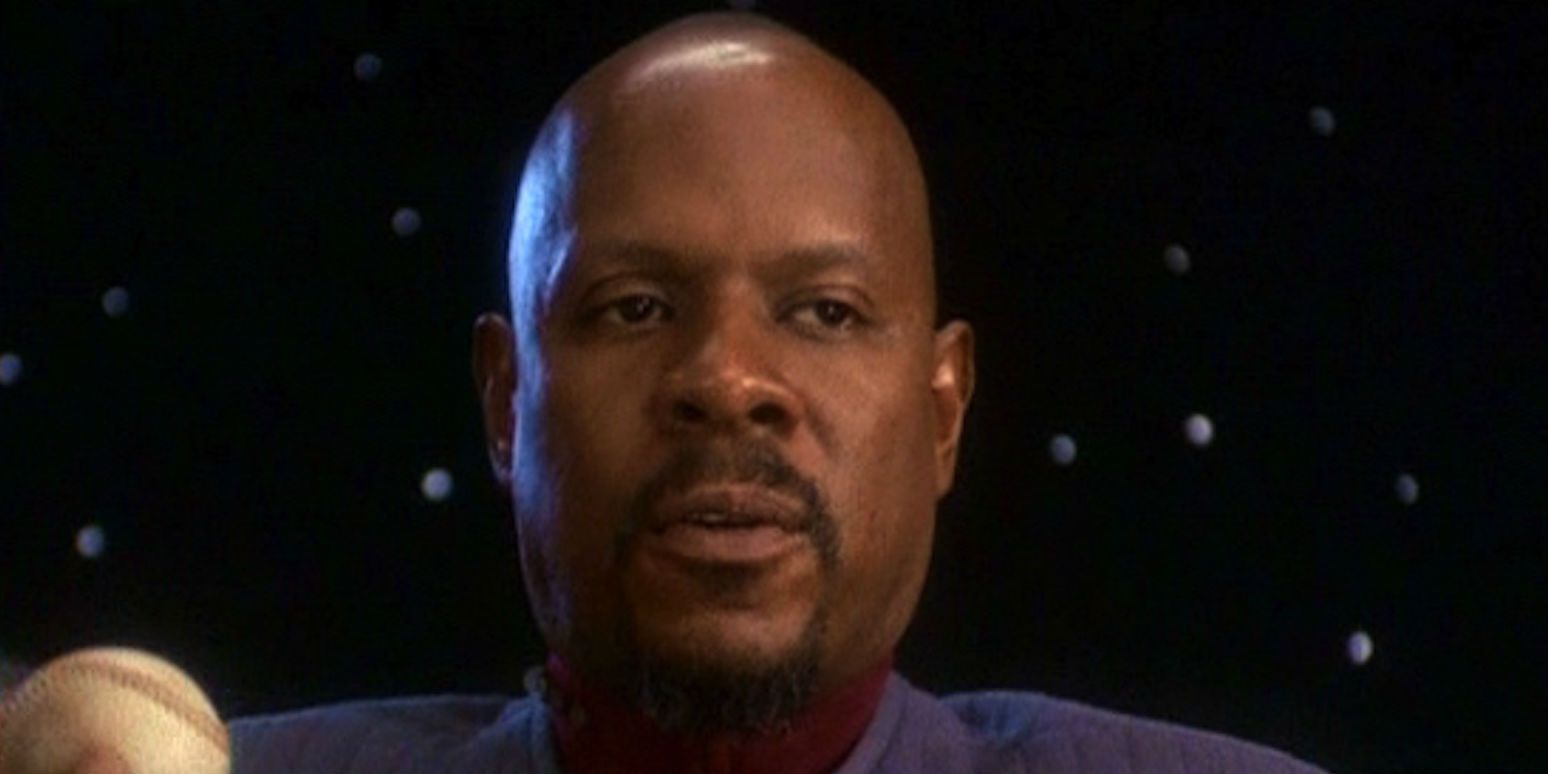
Despite Avery Brooks seemingly being finished with all things Star Trek, according to the most recent intelligence (Deep Space Nine’s series finale), Captain Benjamin Sisko could pop up just about anywhere in space/time. After he defeated Gul Dukat and the Pah-wraiths in “What You Leave Behind,” he ascended to the Celestial Temple to join the Prophets. According to his farewell to Kassidy Yates, he had much to learn from them, but he promised he would be back – “a year from now or yesterday.” It seems like a stretch to shoehorn the character in on Discovery, but considering their probable proximity to the wormhole a.k.a. the Celestial Temple, and his own ability to transcend space/time, it’s certainly possible the crew could encounter him in one form or another.
(Any) Q
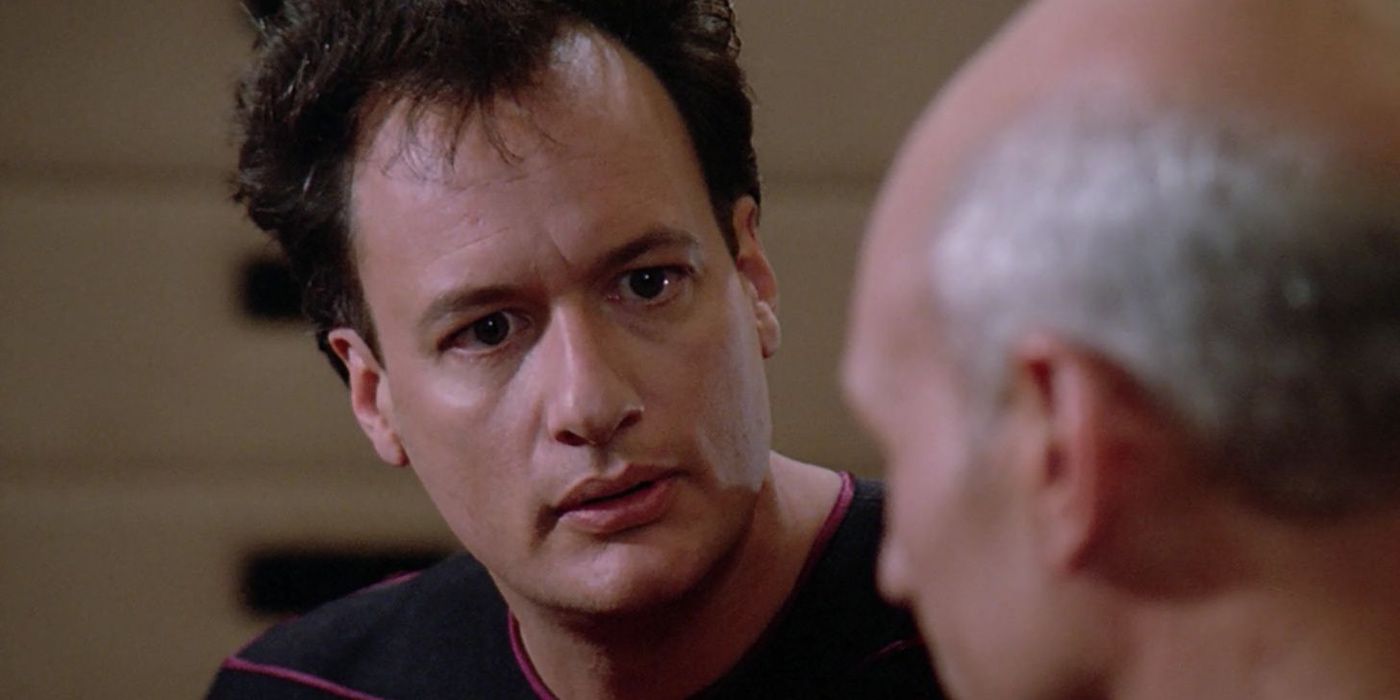
Given their nature as immortal and omnipotent, the Q’s presence in the 32nd century isn’t in question, so much as is the possibility of them appearing on Discovery. Initially the idea of Q was meant as a stand-in for God or any omnipotent deity favored by organized religion. It was a reflection of Roddenberry’s commitment to humanism instead of a theocentric that Q was an all-powerful baby who didn’t care anything for humanity beyond using them as a toy for his own amusement. Granted, his character softened considerably over the course of TNG, Deep Space Nine and Voyager, but that in and of itself only proves that the character and conceit were explored thoroughly. Q still maintain a robust presence in apocrypha, but the concept of a misanthrope nuisance who dives in to muss the hair of Starfleet and dives out again was cornered in season 1 by Harry Mudd. There are definitely Q in the 32nd century, but it feels unlikely they’d show up on Discovery. Harry Mudd on the other hand…
Harry Mudd
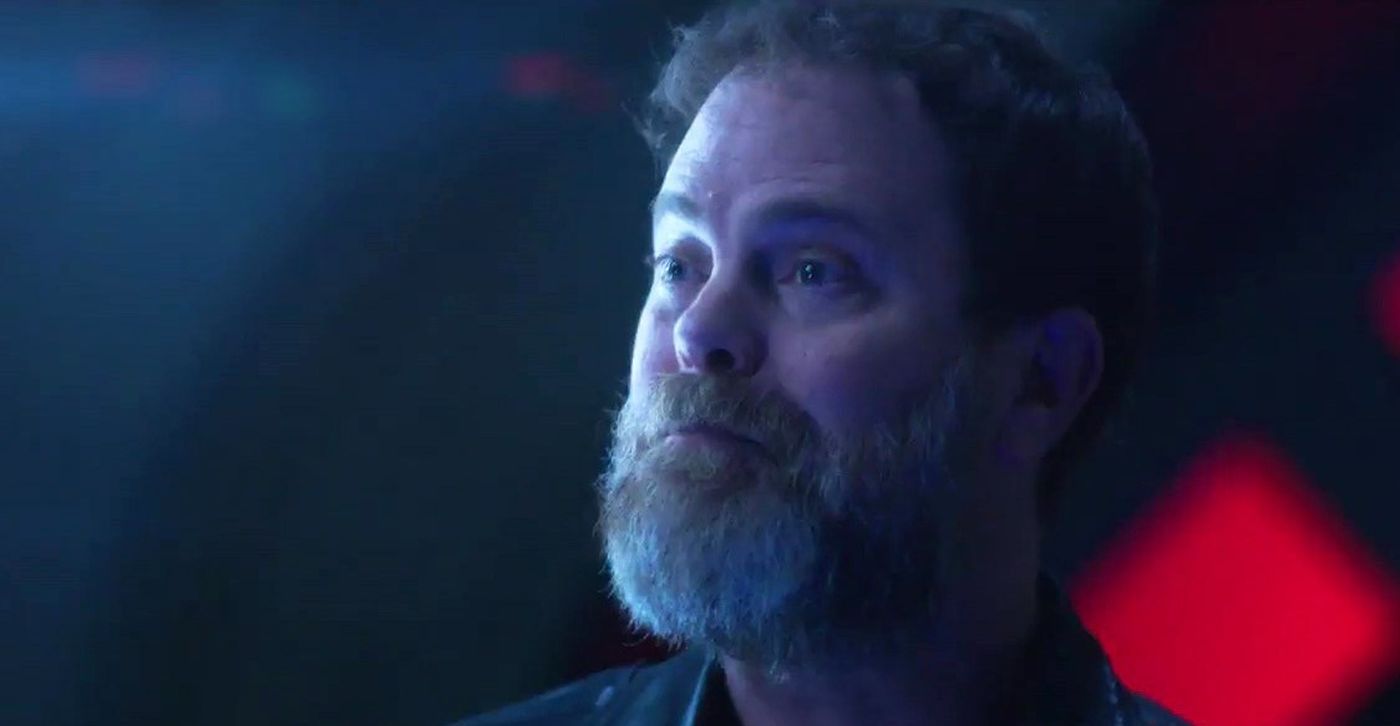
Harry Mudd is a human with the lifespan to prove it, but if there’s one thing season 1 of Discovery taught us, is never to count out Harcourt Fenton Mudd. He’s already proved himself adept at the use of time crystals to travel through time for nefarious purposes. He’s still got to stick around in the 23rd century to fill out his Original Series commitments, but given where he stands at the end of “I, Mudd” he might be inclined to get as far away from the Stella Droids as he possibly can. Knowing he has “people” in the 32nd century (because let’s face it, regardless of what everyone agreed to, there are bound to be rumors flying around about what really happened to Discovery and Mudd is just the kind of man to hear them) might influence him to chase the ship down one last time. We can only hope. Otherwise Rainn Wilson’s Mudd was a costly casualty of this reset.
Zefram Cochrane
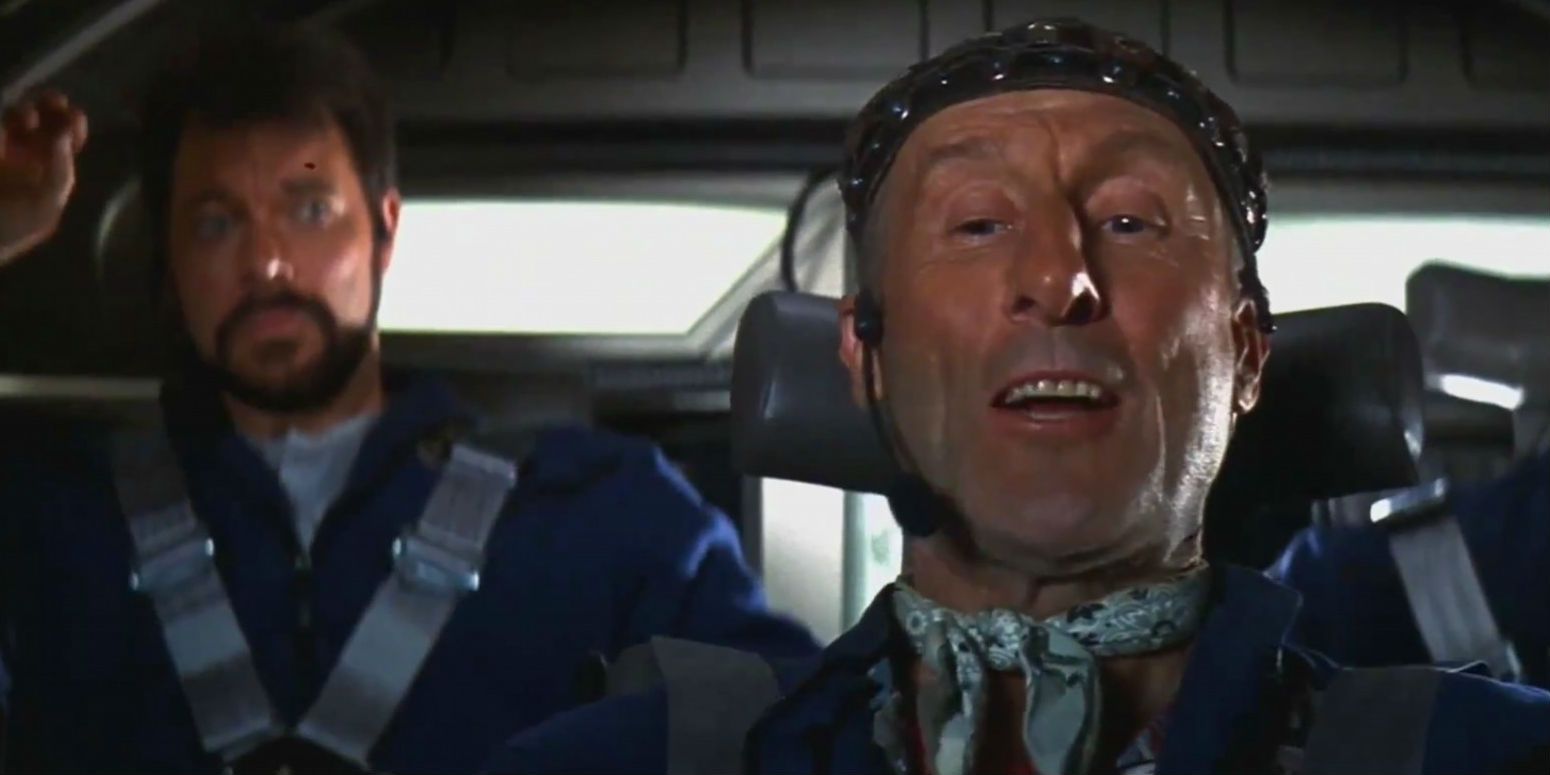
Inventor of warp drive and classic rock enthusiast Zephram Cochrane is probably best-known to many fans for his role in Star Trek: First Contact as played by James Cromwell. But the character first appeared in an Original Series episode titled “Metamorphosis” played by Glenn Corbett. The story revealed Cochrane, long thought dead, had been granted immortality by a non-corporeal being called the Companion, who’d also fallen in love with Cochrane. Eventually the entity merges with a human woman the Enterprise had been ferrying to a diplomatic mission and who also happened to be suffering from a terminal illness. While at first Cochrane hadn’t been keen on starting a romantic relationship with an alien, its new form was far more pleasing to him. Unfortunately, the entity was bound to the planet which it inhabited, so if Cochrane wanted to maintain the youth and immortality the entity granted him, he’d have to stay put. The Discovery would most likely have to make it back to that planet in order to meet him, but presumably he’s still out there and probably in the mood for visitors.
The Prophets
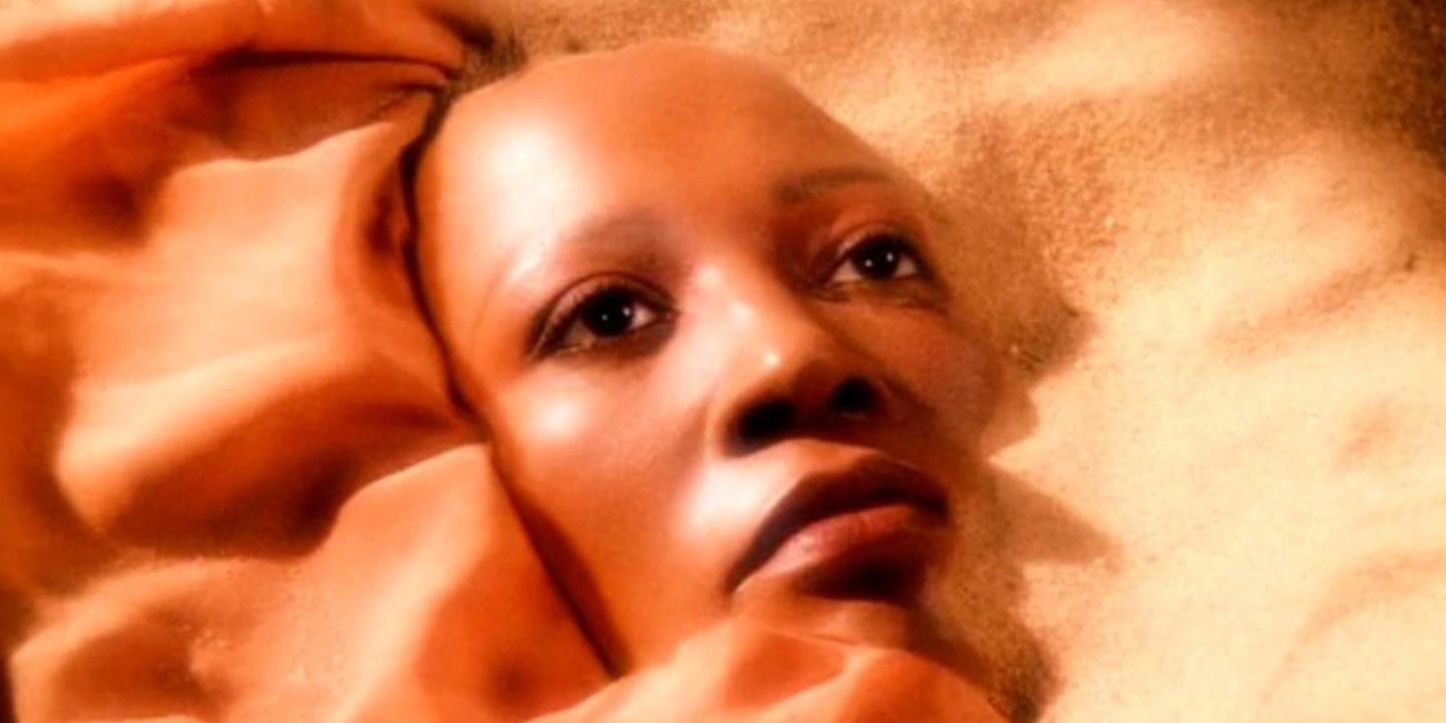
The Prophets the Bajoran people worshipped as gods were actually aliens that resided in the stable wormhole adjacent to the planet and Deep Space Nine. Like the Q and the Traveler, they exist outside normal space/time, making it very possible they’re still around in the 32nd century. Or have always been around. Or will be around. To quote Ben Sisko, “It’s not linear.” What’s interesting is that even though the Prophets are “of Bajor” and live inside the wormhole, they can take corporeal form and travel when necessary – sort of. Benjamin Sisko was the product of a Prophet doing just that – his biological mother Sarah was possessed by one such Prophet who left her body after Sarah married Joe Sisko and had Ben. The Prophets were so integral to the story of Deep Space Nine that it almost feels out of place for them to show up on another series, but when it comes to pure speculation, they’re among the beings eligible to be encountered by Discovery in further seasons.
The Doctor
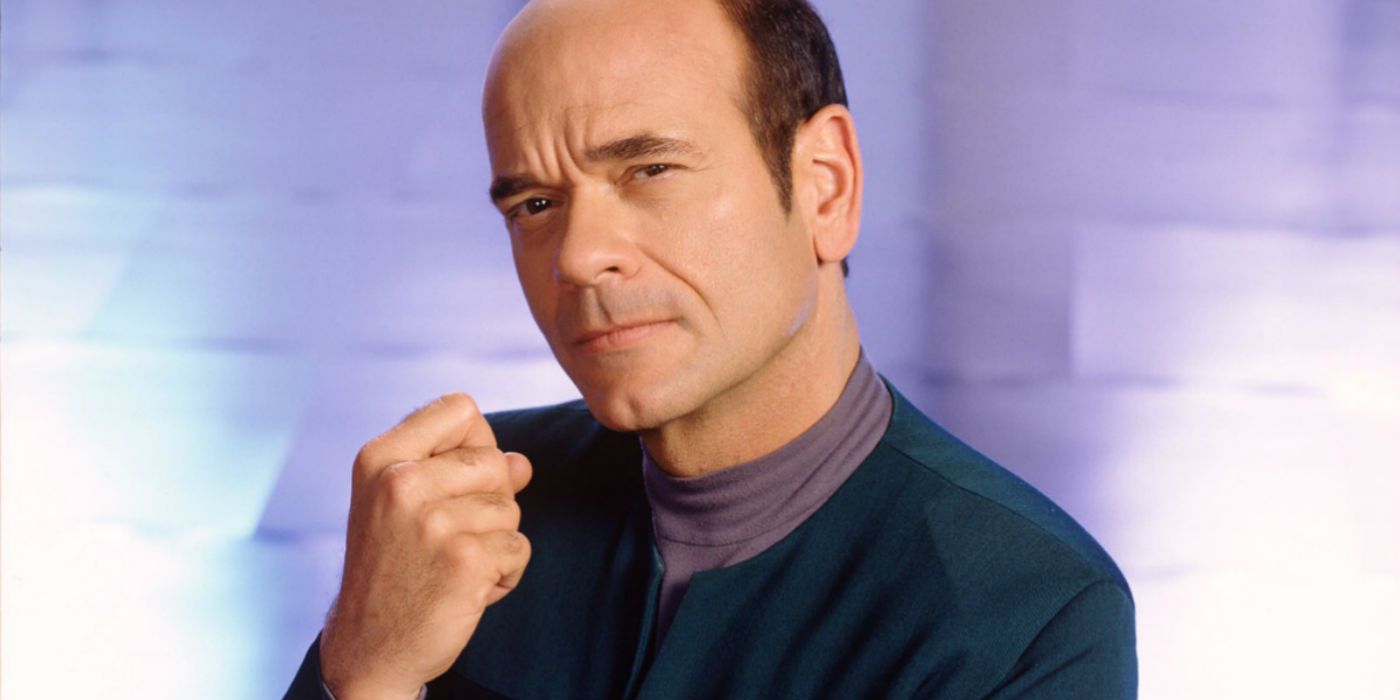
Star Trek: Voyager played around with time travel a great deal during its seven-season run, but the Doctor wouldn’t need any fancy tech to meet up with Discovery in the 32nd century. All he would need is appropriate data storage. In “Living Witness,” a backup version of the EMH program had lain inactive for over 700 years before being discovered by an alien whose planet Voyager had a relatively minor skirmish with centuries before. The program is completely intact – so much so that he can serve as a “living witness” to history surrounding the nature of Voyager and her crew the planet’s historians have gotten so completely (and deliciously) wrong. The end of that episode establishes that he resided in the Delta Quadrant for a further period of time before heading back to the Alpha Quadrant to see what happened to Voyager. If Discovery sticks around in the Beta Quadrant, it’s unlikely they’d meet up, but the possibility is intriguing given the hologram’s nature as essentially immortal.
Data
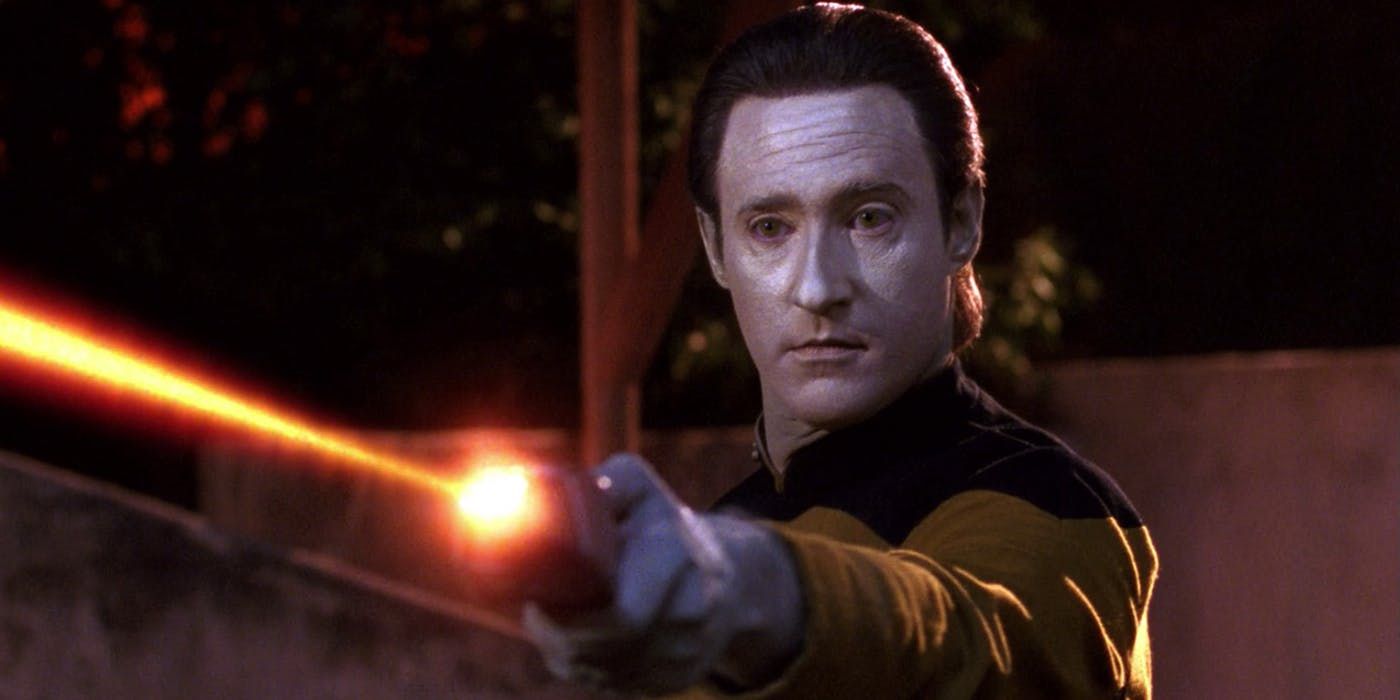
As evidenced by the events of “Time’s Arrow,” Data’s lifespan, as it were, is pretty limitless given the right upkeep. Granted, the android we know and love sacrificed himself at the end of Nemesis, his “brother,” B-4 is still around and potentially has Data’s memories stored somewhere in his neural net. It’s not that big a leap to presume what’s left of Data could’ve manifested itself into a new android body that wouldn’t be played by Brent Spiner (pretty intriguing premise for an episode if you ask us). And considering the bittersweet ending the innocent, well-meaning droid got, his reappearance on Discovery would make for a satisfying and nostalgic rebirth. Though it’s also worth noting that Data already came back in the Star Trek novel Seize the Fire, and as Discovery seems unafraid to pull from those stories, we could meet him after he followed that trajectory, too.




